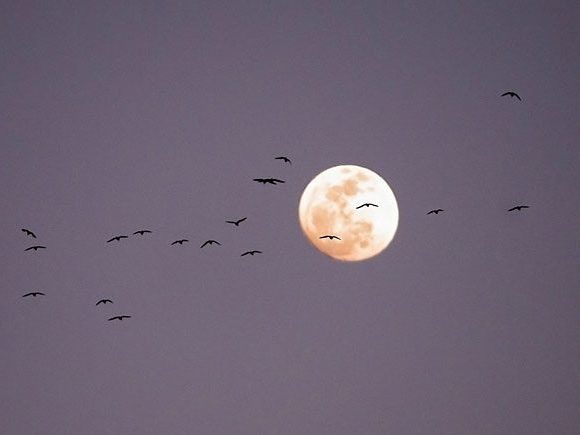Why do migratory birds crash into buildings and how can it be prevented?

Even in the best of circumstances, spring and fall are dangerous times for migrating birds. When they migrate over major cities, the risks increase. Many potentially fatal collisions happen when a nocturnal migrant hits a lighted high-rise jutting into their airspace. Some of these collisions are random, but much more often the lighted windows lure birds to their deaths.
The reasons are not entirely understood, but nocturnal migrants often navigate by the stars and illuminated windows and other night lights often divert them from their original flight paths, especially in low-ceiling or foggy conditions. The birds mill about in the lighted area, where they collide with the lighted structure or with one another. In addition to buildings, communications towers and radio antennas pose similar threats. Hundreds or thousands of dead birds may litter city streets after a wave of migrants has passed through. In all, an estimated 100 million to 1 billion birds die each year in North America from colliding with structures.
As we learn more about where, when and how these nighttime collisions happen, we are also learning how we can prevent them. Since 1993, the Fatal Light Awareness Program (FLAP), a Toronto-based conservation society, has spearheaded “Lights Out” programs across North America, calling for buildings in major cities to turn out all of their lights each night during peak migration times. One study conducted by the Field Museum in Chicago showed that in one building, turning the lights off reduced the number of bird kills by an average of 83 percent. The Cornell Lab’s Birdcast program applies weather surveillance radar to gather information on the numbers, flight directions, speeds and altitudes of birds aloft—this helps predict how many birds will be migrating on any one night in your area, and Birdcast’s local bird migration alerts indicate the most important nights to turn off lights.
There are other reasons that birds collide with buildings, and especially with windows. Visit our Window Collisions page for more on the subject, and learn about window treatments that help prevent collisions in residential areas. If you find a bird that has been killed by collisions with buildings and windows, you can report it to the FLAP Mapper, FLAP’s global database.
The Cornell Lab’s Birdcast program applies weather surveillance radar to gather information on the numbers, flight directions, speeds and altitudes of birds aloft in order to expand the understanding of migratory bird movement. With all this information, Birdcast is able to provide real-time predictions of bird migrations–when they migrate, where they migrate, and how far they will be flying. Birdcast also provides insight into where birds are after weather events such as hurricanes cause them to go off course.
More Information
- How Can I Keep Birds From Hitting My Windows?
- Glass Action for Birds, Living Bird, Winter 2014.
- Why Birds Hit Windows—And How You Can Help Prevent It offers suggestions and photos of window treatments that help prevent collisions.
- Hope For Solving Bird Collisions, a brief report on the problem of bird strikes as discussed at the 2009 meeting of the American Ornithologists’ Union.
- Dr. Daniel Klem, one of the field’s leading researchers, has posted several research papers with promising solutions on his website.
- Bird Injuries From Collisions With Windows: What We Know, And What You Can Do [Video], Dr. Christine Sheppard is the Bird Collisions Campaign Manager at the American Bird Conservancy. In this talk, she discusses the tools we have to solve the birds and windows problem, and how we can get solutions implemented. This is one conservation issue where individuals can take immediate action and see immediate results.

All About Birds
is a free resource
Available for everyone,
funded by donors like you
American Kestrel by Blair Dudeck / Macaulay Library
